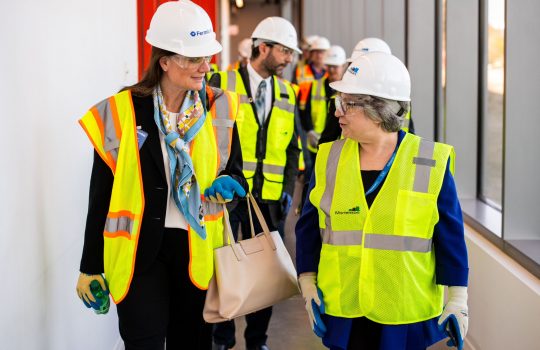Registration required by Friday, October 31
BATAVIA, Ill.-Scientists at the Department of Energy’s Fermi National Accelerator Laboratory are offering a special “Antimatter Sunday” on November 2, at 1 p.m. The two-hour program includes a 30-minute presentation by Roger Dixon, head of Fermilab’s Beams Division. After the talk engineers and scientists of Fermilab’s Antiproton Source will be on hand to guide people through a section of the accelerator tunnel that is used to produce antiprotons.
Since its start-up in 1985, Fermilab’s Antiproton Source has produced just over 2.3 nanograms (billionth of a gram) of antiprotons. Visitors will learn about the nature of antimatter and how scientists produce tiny amounts of antiprotons at Fermilab. Throughout the program scientists will be on hand to answer questions.
Often referred to as the “mirror world,” antimatter has the opposite electrical charge of matter. Upon contact, matter and antimatter particles annihilate and release energy as tiny flashes of light. This effect is used in a medical application called Positron Emission Tomography. Often referred to as PET scan, the technique relies on the detection of light rays produced by the annihilation of positrons, the antimatter-partners of the well-known electrons.
Participation in the program is limited. Visitors need to call 630-840-5588 or 630-840-3351 during business hours to register. The minimum age for participation is 10 years. The tour requires walking and involves stairs. Visitors should wear comfortable shoes. Advance registration for the program, which is free of charge, is required by Friday, October 31, at noon.
Fermilab is a national laboratory funded by the Office of Science of the U.S. Department of Energy, operated by Universities Research Association, Inc.



